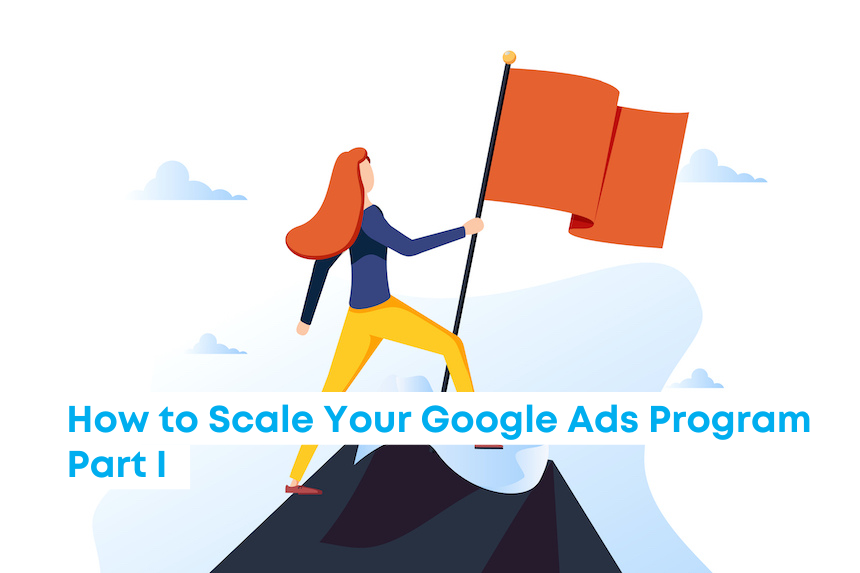New clients often ask how they can scale their paid search program.
Unfortunately, the answer isn’t simple.
Why?
Because there’s no one way to scale.
Scaling successfully relies on multiple factors—the importance of which will vary for every business.
Despite the complexity, we’ve worked with many clients to successfully scale their paid search programs.
In some cases, we’ve grown their programs by a factor of 10, or even 100! And it feels great to know we’re contributing to the overall success of their businesses.
Which takes us back to our opening question: what does it take to scale your Google Ads program?
Unfortunately, success doesn’t follow a set recipe.
But in this first article of a series, we’ll explore the first five of the most important 13 factors.

1. Open communication between client and agency
Time and again, our greatest successes are with clients that are willing to share their vision and goals—which also means having open and honest conversations about the challenges their businesses are facing and any areas of weakness.
The more we can get on the same page, the more we’re able to help you reach your goals—both in your paid search program and more broadly.
Without these insights, we have one hand tied behind our backs.
Sometimes, it’s as simple as saying, “Yes, we want to grow our PPC program… and here’s what’s standing in our way.”
We can take it from there.
2. A baseline of faith and trust
Another essential element is that you have a baseline of faith in paid search as a marketing channel and a baseline of trust in us as an agency.
Of course, faith and trust have to be earned, and we’re fully prepared to prove ourselves.
But at the same time, if we have to convince you in every conversation that paid search is worth the effort—and we’re the ones to do it for you—it puts brakes on your ability to scale.
3. A focus on longer-term goals
Shifting your focus from short-term to long-term goals is also important.
Hitting your goals straight out of the gate is unusual. Typically, we need time to develop strategies, test and optimize.
Clients that successfully scale their programs understand that this process takes time and are willing to wait for it.
4. An open budget
Having an open budget is also important.
Now, I’m not suggesting that you open the floodgates.
Rather, I’m suggesting that if you want to scale, you need to be willing to increase your budget in proportion to your results.
Because a paid search program with a set-in-stone budget simply won’t grow.
For example, here’s a client that started with a budget of $6,000 a month in November of 2020:

They earned $10,000 in revenue that month.
By June of 2021, they had increased the budget to $34,000 a month, and we were earning $67,000 in revenue!
Could we have achieved $67,000 in revenue if the budget had stayed fixed at $6,000 per month?
Of course not. We needed that budget increase to continue generating these impressive returns.
What’s particularly striking is that this client came to us from another agency. That agency was strictly managing to the existing budget, which severely limited growth.
I’m not sure why the previous agency managed the account that way—perhaps it was inexperience or an unwillingness to engage the client in a conversation about bigger goals.
Whatever the reason, that approach put a real damper on growth, which illustrates why communication is so important. And when we grew the account for the client, they were thrilled!
Unfortunately, this kind of over-management of PPC isn’t unusual. We often see accounts that are so tightly managed, they eventually manage themselves out of existence.
So, with these words of warning in mind, how can you know if you’re missing out on opportunities to scale?
Try looking at your impression share metrics. Impression share is the “percentage of impressions your ads receive compared to the total number of impressions your ad could get.”
If your “top impression share” is low, you may have room to grow.
Conversely, if your “lost impression share” is high, you may also be losing out on opportunities.
Here’s how Google explains it:

5. International advertising
Another important contributor to a growing paid search program is to put your program to work everywhere you’re selling.
Many of our clients sell their products and services in multiple cities, states and countries. Most of them have translated their ads and landing pages for their top markets (where English isn’t the predominant language).
Unfortunately, not everyone does this—which is a lost opportunity and again limits your ability to scale.
This doesn’t mean you have to advertise in a dozen countries out of the gate. Instead, you can start with one city, state or country and keep adding as you grow.
For example, one of our clients started by advertising in one U.S. city only. Today, they advertise in over 50 cities.
Stay Tuned for Part II in this Series
As you can see, this is a big topic.
So far, we’ve covered five of the main factors necessary to successfully scale your Google Ads program.
Stay tuned for our next blog post where we’ll reveal the remaining eight!






